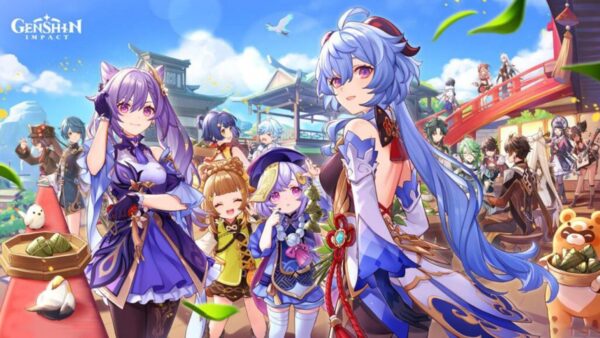Popular Now
Introduction
Since Genshin Impact’s global launch, players have fallen in love with its immersive open world, engaging characters, and evolving narrative. However, one mechanic has consistently divided the community and shaped how players experience the game: the Original Resin system. As a core resource tied to character growth, artifact farming, and boss rewards, Resin is both a daily driver and a frustrating bottleneck. This article explores how the Resin system influences progression, balance, and long-term engagement in Genshin Impact.
1. The Origins of Resin: Why It Exists
Genshin Impact launched with a resource called Original Resin — a time-gated stamina system that regenerates slowly throughout the day. Players use Resin to claim rewards from domains, weekly bosses, and ley line outcrops. Initially capped at 120 (later increased to 160), it was designed to manage playtime and avoid grinding fatigue.
From a game design perspective, Resin serves three purposes: pacing player progression, encouraging daily logins, and preventing server overload. These intentions made sense at launch, but as the game has grown, Resin’s limits have remained largely unchanged — a fact that increasingly frustrates both new and veteran players.

2. The Early Player Experience: Hitting the Resin Wall
In the early game, Resin isn't much of a concern. Players are focused on exploration, quests, and unlocking new characters. But as Adventure Rank increases and domain farming becomes necessary, the Resin system begins to dominate gameplay decisions.
Many players hit what’s known as the “Resin wall.” It’s the point where they want to do more — level up characters, improve weapons, farm artifacts — but find themselves constrained by daily Resin limits. The result is a game that feels rich in content but restrictive in access, leading to a sense of helplessness for highly motivated players.
3. Artifact RNG and Resin: A Double Punishment
One of the biggest criticisms of the Resin system is its connection to artifact farming. Domains cost 20 Resin per run, and the results are completely RNG-based. Even if you get a 5-star artifact, its stats may be unusable, making the time and Resin spent feel wasted.
This means progression is not only time-gated but luck-dependent. You might spend a week’s worth of Resin farming a set like Crimson Witch or Emblem of Severed Fate and end up with nothing viable. This randomness is magnified by the inability to farm endlessly, creating a toxic loop of limited opportunity and low reward.
4. Spending Primogems on Resin: An Unappealing Trade-off
While players can refill their Resin using Primogems or Fragile Resin, the exchange rate is often considered poor. One Resin refill costs 60 Primogems — the same currency used for character and weapon wishes. Given the value of gacha pulls, many players avoid spending Primogems on Resin unless absolutely necessary.
This sets up an unpleasant dilemma: Do you use your hard-earned Primogems to farm materials you need, or do you save them for new characters? Most players opt for the latter, leading to slow progression and underdeveloped characters, especially during banner events.

5. Weekly Bosses and the Resin Budget Crisis
Every week, players face another challenge: how to allocate their limited Resin across weekly bosses. These encounters are critical for character ascension materials and cost between 30 to 60 Resin per fight. With only 160 Resin per day, a couple of boss runs can quickly eat up your entire supply.
This forces players to choose between boss fights, artifact domains, talent books, or mora farming. It's impossible to do it all within a single day or even a single week unless you use Fragile Resin or pay Primogems. The scarcity of Resin turns each decision into a painful trade-off, especially when multiple new characters are released in a single patch.
6. Event Overlap and Resin Conflicts
While many in-game events are designed to be Resin-free, there are notable exceptions. Some events provide double drops or access to rare materials but still require Resin to participate. When these events overlap with major character releases or regional expansions, players often feel overwhelmed.
This scheduling conflict puts pressure on players to burn through their Fragile Resin stock or skip essential daily content to participate in limited-time events. Rather than creating excitement, it introduces more stress into the gameplay cycle, especially for free-to-play users who can’t afford to refill their Resin frequently.
7. Fragile Resin: A Temporary Bandage
To help alleviate Resin limitations, HoYoverse occasionally provides Fragile Resin through events, battle passes, and the Adventurer Handbook. These consumable items grant 60 Resin per use but are rare and finite. Some players hoard them for future banners, while others use them immediately to speed up farming.
The divide between Fragile Resin hoarders and spenders reflects the larger problem: the system doesn’t scale well with the game's increasing complexity. While Fragile Resin offers temporary relief, it doesn’t address the core issue of Resin scarcity as a long-term progression inhibitor.

8. Resin Efficiency Culture and Player Burnout
Over time, a subculture of “Resin efficiency” has emerged among players. Guides, spreadsheets, and farming calculators are now common tools used to maximize daily gains. While this shows dedication, it also reveals how restrictive the Resin system has become — players are forced to micromanage every minute of their Resin usage.
This optimization mentality turns Genshin from an adventure RPG into a routine. The joy of experimentation and spontaneity fades when every domain run or boss fight has to be justified in terms of ROI. It’s no surprise that many players report burnout after months of calculated play.
9. HoYoverse’s Response and Missed Opportunities
To date, HoYoverse has made only minor adjustments to the Resin system: increasing the daily cap from 120 to 160, reducing the Resin cost of some weekly bosses, and occasionally hosting double drop events. But these changes are surface-level and don’t address the system’s foundational problems.
The community has proposed numerous alternatives, from Resin overflow storage and daily domain tickets to dynamic Resin generation based on player level. Yet these suggestions have largely been ignored, likely because Resin plays a key role in driving daily engagement and, by extension, revenue.
10. The Path Forward: Can Resin Be Reformed?
As Genshin Impact continues to grow — with more regions, more characters, and more materials — the Resin system feels increasingly outdated. What once served as a tool to prevent burnout is now a limiting factor that hinders progression and enjoyment.
If HoYoverse wants to maintain long-term player loyalty, a Resin overhaul may be necessary. Whether it’s through increased daily caps, adjustable domain costs, or a more flexible reward system, giving players more freedom to engage with the content they love would benefit both sides. The question is: will they listen?
Conclusion
The Resin system in Genshin Impact is one of the game’s most debated mechanics — and for good reason. What started as a pacing tool has evolved into a significant barrier for both new and experienced players. Its connection to RNG, limited farming, and monetization choices often detracts from the freedom and adventure that define the rest of the game. As Teyvat expands and the player base grows, it’s time for Resin to evolve too. Without meaningful reform, it risks becoming the anchor that holds Genshin Impact back from true greatness.

















